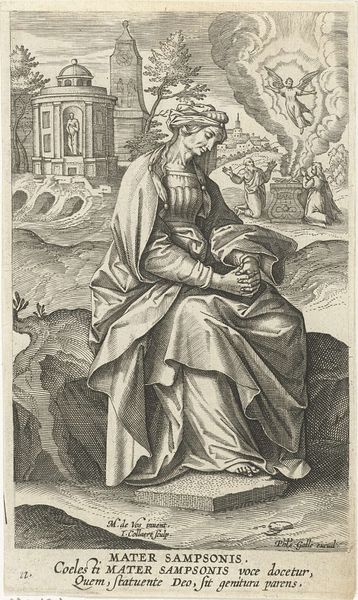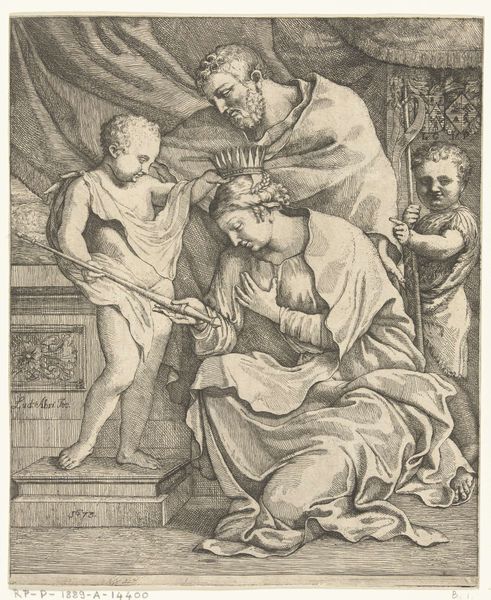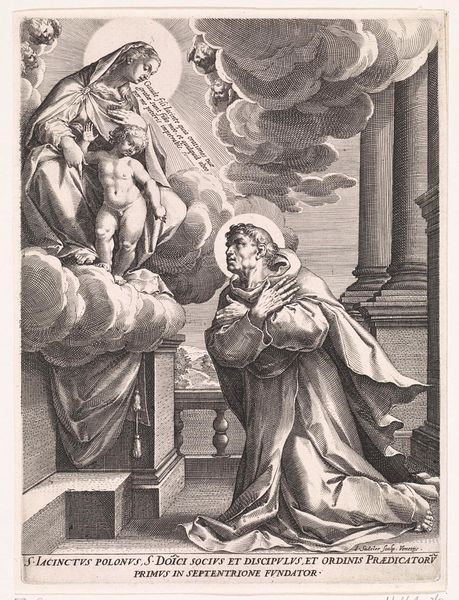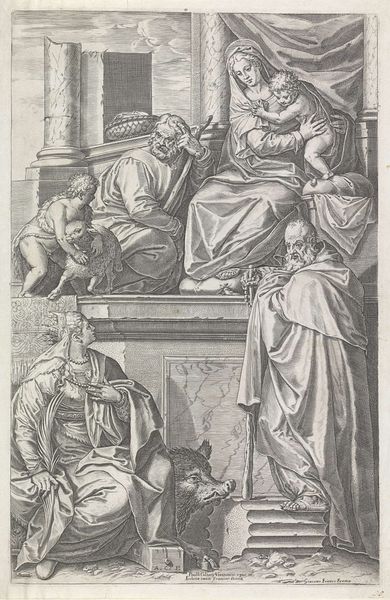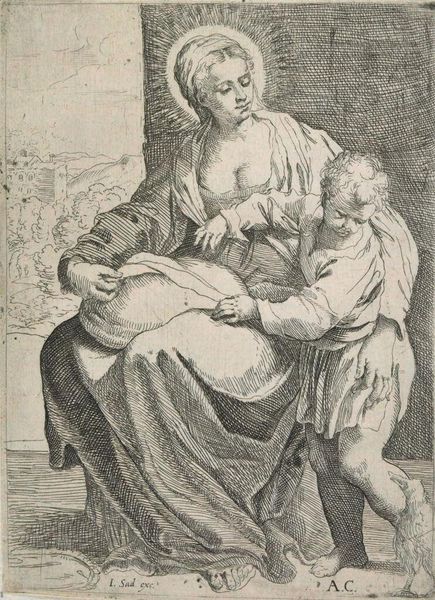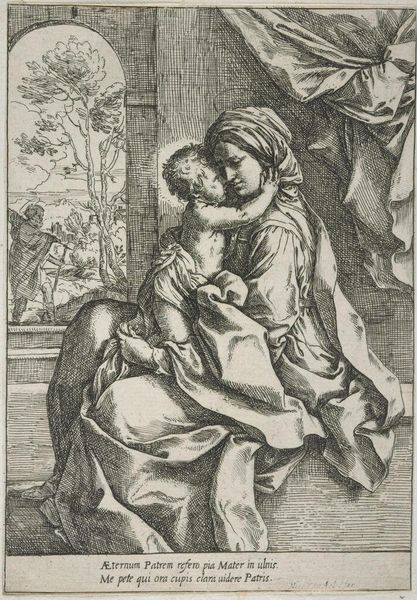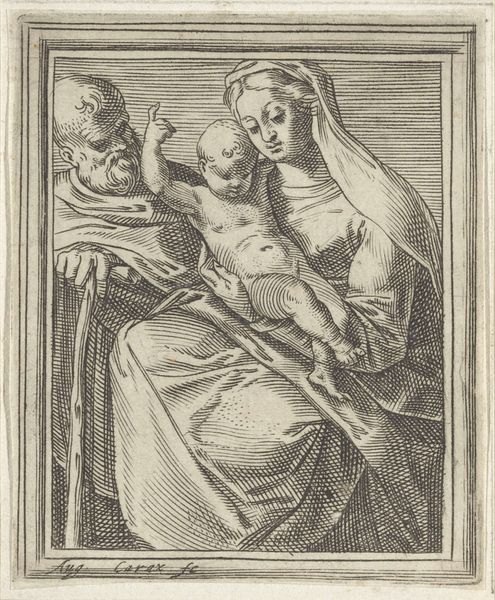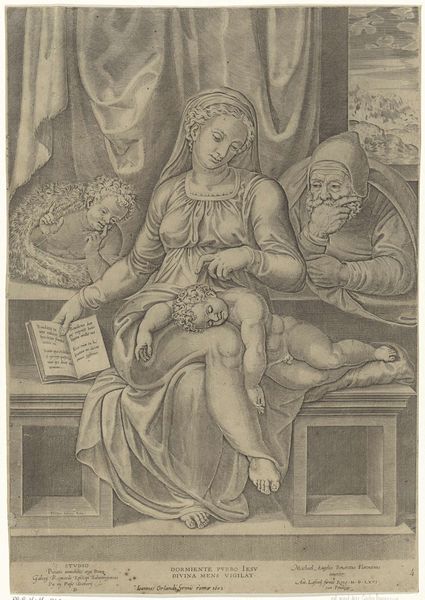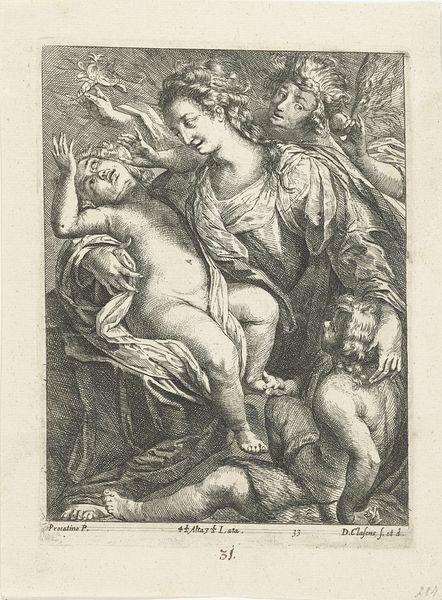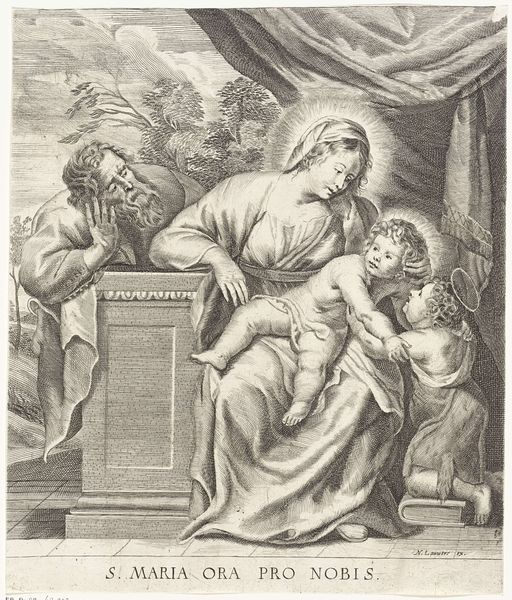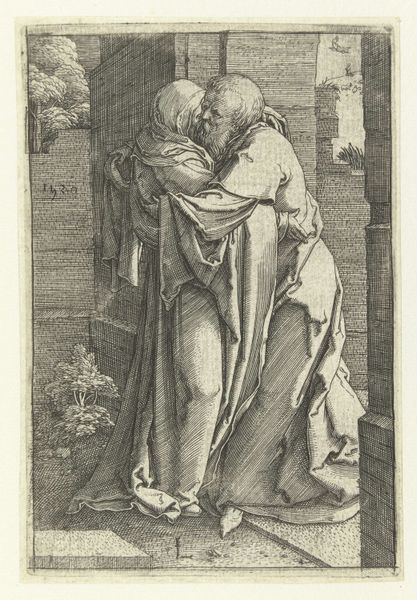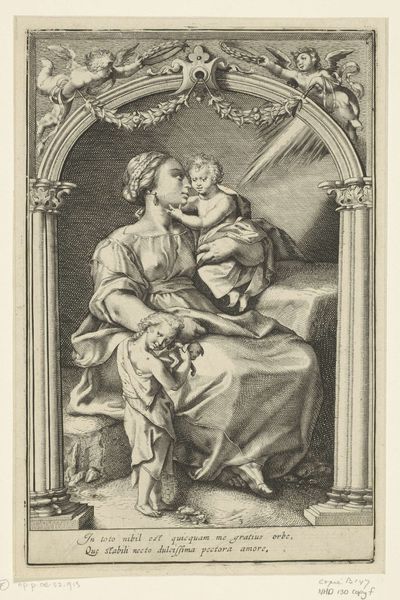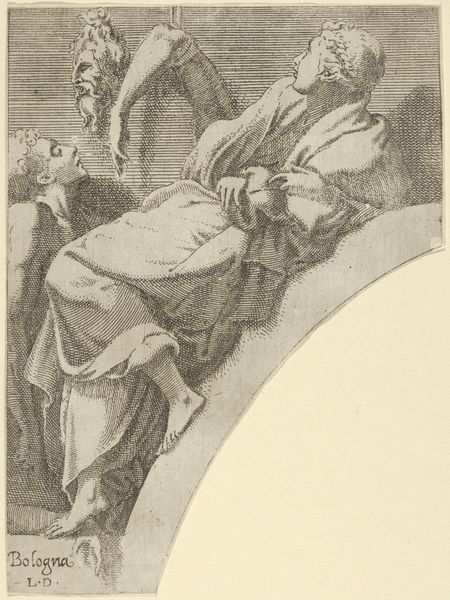
print, engraving
#
baroque
# print
#
figuration
#
history-painting
#
engraving
Dimensions: height 153 mm, width 89 mm
Copyright: Rijks Museum: Open Domain
Editor: So, this is “Tabita,” an engraving by Jan (II) Collaert from sometime between 1595 and 1599. The incredible detail achieved through the engraving process is what first strikes me, and yet the subject seems pensive, heavy, as if something tragic has just happened. What can you tell us about this piece? Curator: The lines of this engraving offer an insight into the materiality of 16th-century printmaking. Think about the engraver, Collaert: his labor, the cost of the copperplate, the skill required to translate image to reproducible form. The scene depicts Tabitha, from the Book of Acts, resurrected by Saint Peter. Notice the expressions in the crowd, also resurrected by Collaert’s own labour? What does the shift from manuscript illumination to print mean for religious iconography and its consumption by the masses? Editor: That’s fascinating! The act of making as a sort of parallel to the act being depicted? Curator: Precisely. It democratizes religious imagery. The production shifts from monastic scriptoria to workshops, changing the dynamic of art creation. Now, consider who *could* afford such a print, and why? What narratives does this promote, and for what class of consumer? Editor: So, you're saying that it’s not just about the religious narrative, but also about the social context of its production and consumption? Curator: Exactly! How does mass production alter our understanding of rarity and value? Is it "high art" simply because it imitates painting or sculpture? Or should we instead be examining the social relationships inscribed within its production and the economic implications of its circulation? Editor: I see… it changes my perspective. The focus on process and accessibility brings the artwork to life in a completely different way, not as something distant, but interwoven in a context of making and using. Thank you. Curator: My pleasure! Hopefully, it also gives one pause to consider how those material circumstances, the when and how a work comes into being, shape how we ultimately interpret its ‘meaning.’
Comments
No comments
Be the first to comment and join the conversation on the ultimate creative platform.
